Clipart tagged: ‘parasitic plant’
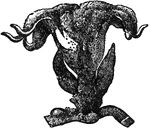
Brugmansia Zipple
"Parasitic Plants are those which are unable to nourish themselves and prey upon other plants or animals;…
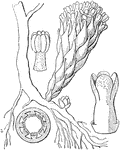
Cytinus
"Cytinus Hypocistis. 1. A flower; 2. a head of anthers; 3. a transverse section of the ovary." -Lindley,…

Dodder
"Cuscuta verrucosa. 1. ovary and calyx; 2. section of do.; 3. its fruit; 4. section of a seed of a Cuscuta;…

Dodder
An illustration of Dodder including: 1, flower removed from; 2, Calyx; Ovary cut acrossed; 4, fruit…

Dodder on Golden Rod
"Dodder growing upon a Golden-Rod Stem. s, seedling dodder plants, growing in earth; h, stem of host;…

Greater Dodder
"Corolla, scales and stamens of, 1. Cuscuta europaea; 2. Cuscuta trifolii." -Lindley, 1853

Hydnora africana
The Hydnora africana is a parasitic plant growing in deserts known for giving of the odor of feces to…

Hydnora africana
The longitudinal section of the Hydnora africana is a parasitic plant growing in deserts known for giving…
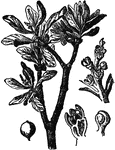
Loranthus Europaes
"Parasitic Plants are those which are unable to nourish themselves and prey upon other plants or animals;…

Parasitic Plant
"Cissus laciniata, parasitic on the cactus (Opuntia Blakeana). The parasitism was artificially induced…
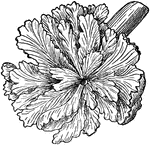
Wood Rose
"Wood-rose, a remarkable vegetable excrescence, resembling a flower with radiating corrugated petals…
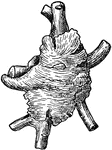
Wood Rose
"Wood-rose, a remarkable vegetable excrescence, resembling a flower with radiating corrugated petals…
